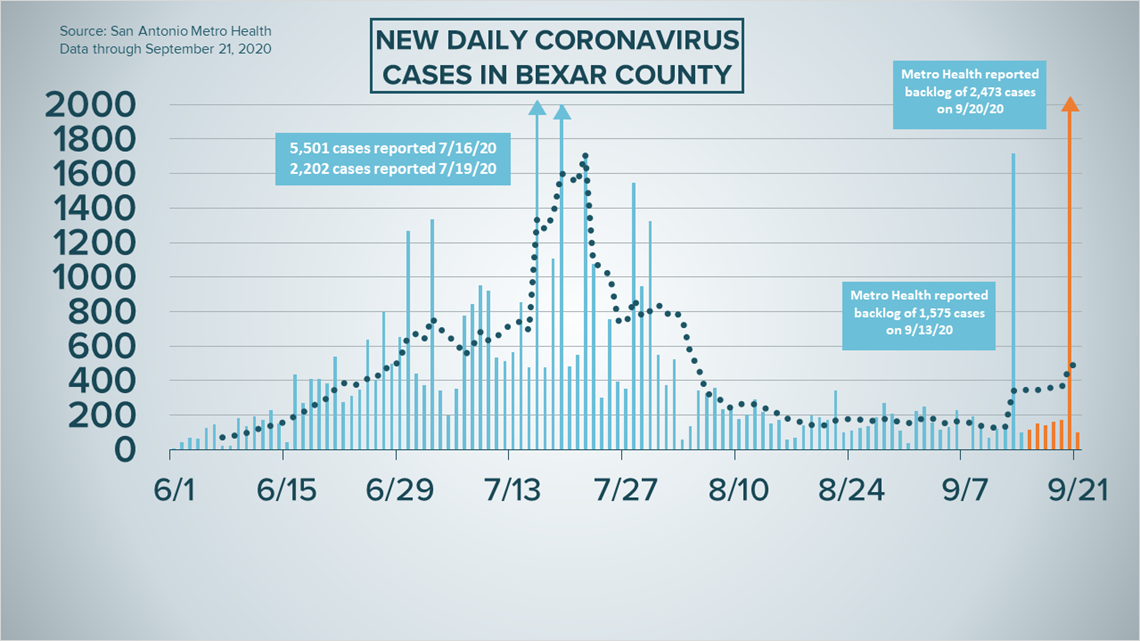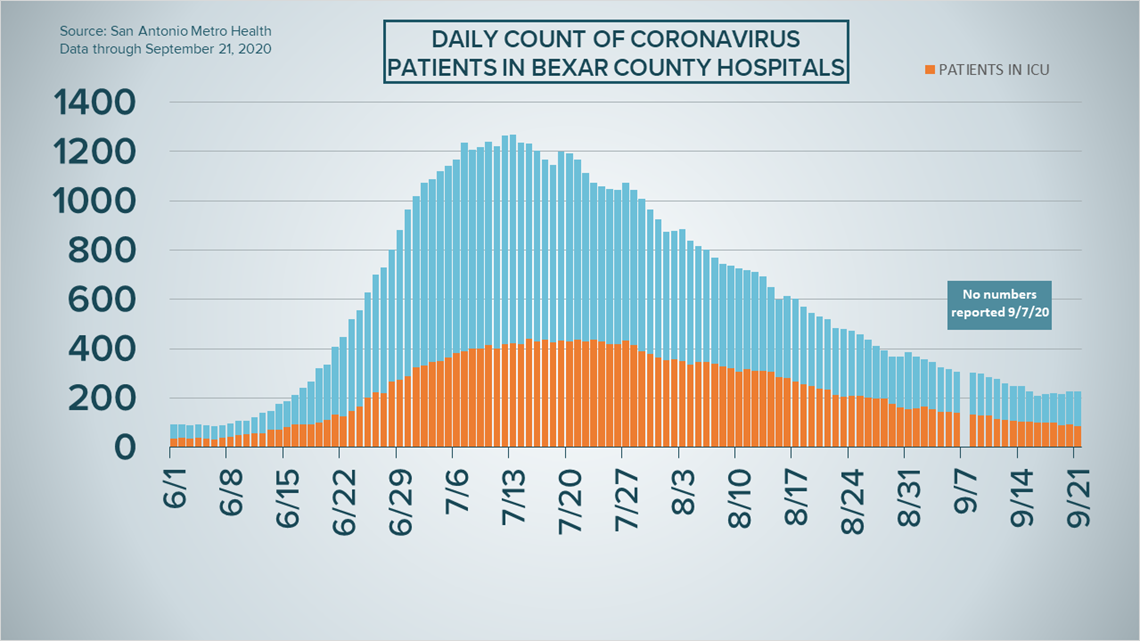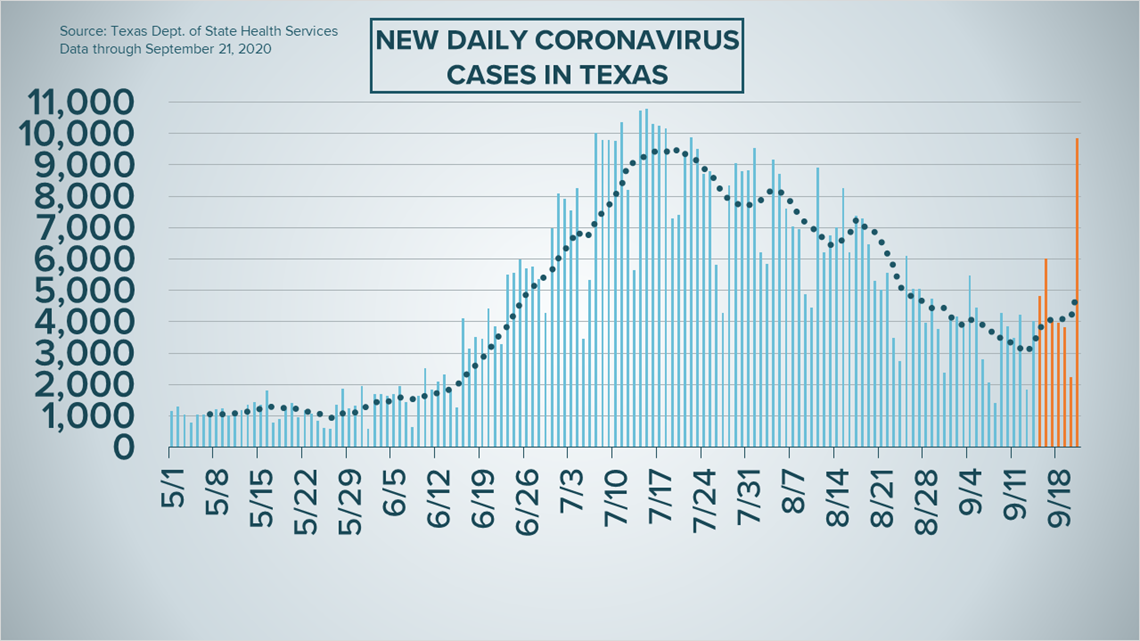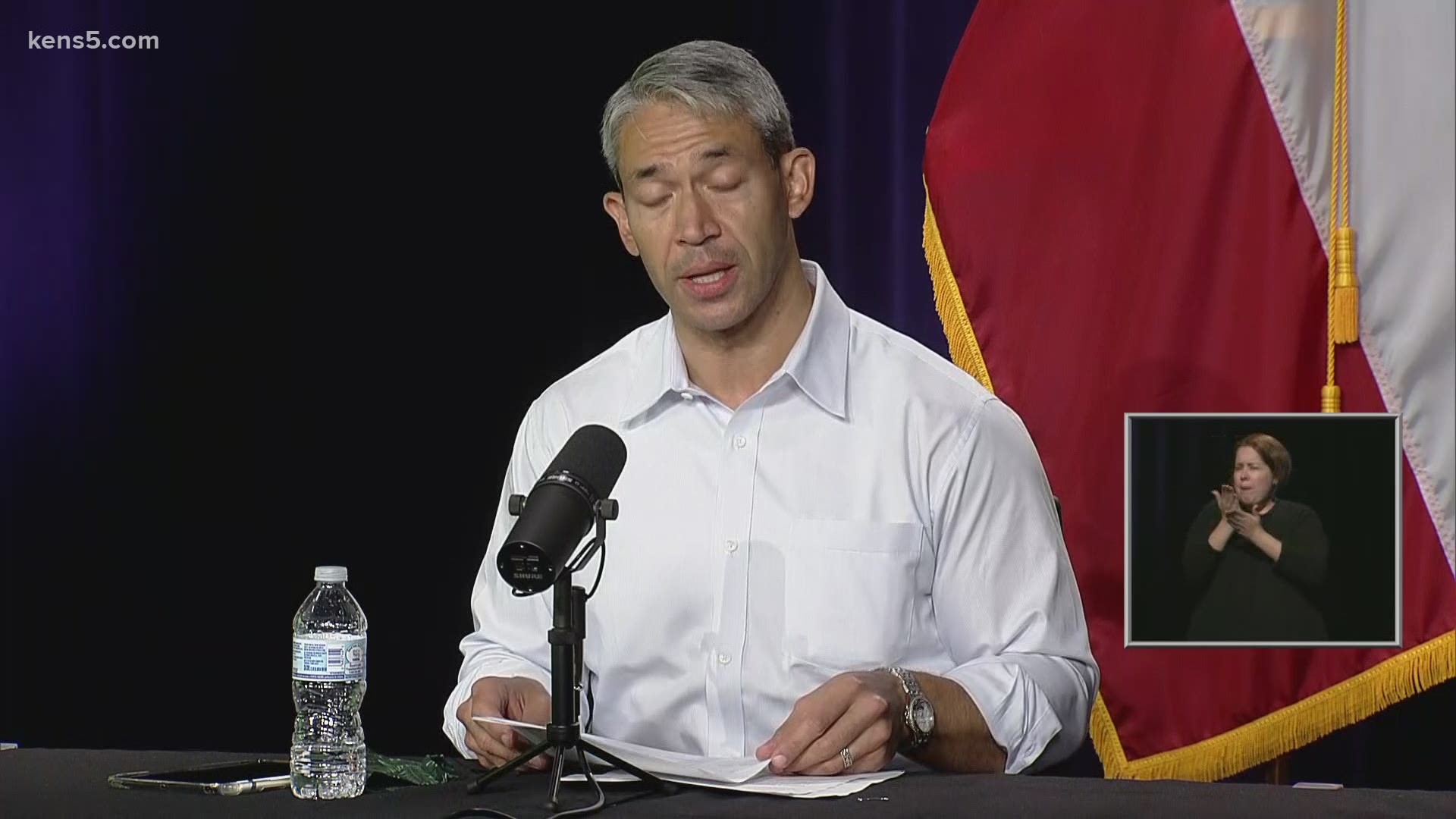SAN ANTONIO — We're tracking the latest numbers from the coronavirus pandemic in San Antonio and across Texas. Here are the latest numbers reported by Bexar and surrounding counties:
- Bexar County: 102 new cases were reported Monday, bringing the total number for the county to 53,443. The county death toll rose to 1,062 after one new fatality was reported.
- Comal County: The county reported 16 additional cases on Monday. No additional deaths were reported. There have been a total of 3,296 cases of COVID-19 in the county – including 2,606 confirmed cases – while 116 county residents have died. County officials say there are 299 active coronavirus cases, and 2,881 residents are considered recovered.
- Hays County: Officials in Hays County on Monday reported 42 new cases in the county and no additional virus-related deaths. As of Monday, there are a total of 5,778 lab-confirmed cases in the county (1,734 of which are active) while the death toll stands at 52. 3,992 residents have recovered from the virus.
How Bexar County is trending
We've tracked how many coronavirus cases have been confirmed in Bexar County from the time officials began reporting cases in March 2020. The graphic below shows the number of cases since June and charts those daily case numbers along a 7-day moving average to provide a more accurate picture of the overall coronavirus case curve in our area and the direction we're trending amid the pandemic.
On Monday, San Antonio Mayor Ron Nirenberg reported 102 additional coronavirus cases in Bexar County, raising the total to 53,443 since the pandemic began.
The death toll rose by one on Monday; In all, 1,062 Bexar County residents have passed away from COVID-19 complications.


Hospitalizations rose by one on Monday, up to 226. The number of local coronavirus patients on ventilators (45) stayed the same while the number of patients in intensive care (85) dropped by seven.


In his weekly update of the county's risk level and progress indicators, Nirenberg noted the positivity rate ticked up slightly to 6.4%. Bexar County remains in the "safe zone" for the third week in a row.
City Manager Erik Walsh announced the timeline for reopening several city services as the city moves into Phase 3 of its four step reopening plan.
Effective immediately, basketball courts, skate parks, playgrounds, sports fields, and fitness stations at city parks have reopened. Parks no longer have a 10-person limit as of Monday.
Coronavirus in Texas
The number of Texans who have tested positive for the coronavirus since the pandemic began grew by 9,853 Monday, according to the Texas Department of State Health Services. Of that increase, 1,742 are attributed to newly-reported coronavirus cases. Another 8,111 cases in the total stem from a number of backlogs throughout several counties:
- 2,088 older cases in Bexar County
- 3 older cases recently reported by labs in Collin County.
- 306 older case recently reported by labs in Dallas County.
- 298 older cases recently reported by labs in Frio County.
- 328 older cases recently reported by labs in Harris County.
- 1 older case recently reported by labs in Houston County.
- 125 older cases recently reported by labs in Tarrant County.
Additionally, DSHS identified 3,921 cases that had not previously been reported from Atascosa, Bandera, Calhoun, Dimmit, Edwards, Gillespie, Gonzales, Guadalupe, Jackson, Karnes, Kendall, Kerr, Kinney, Lavaca, Real, Wilson, and Zavala counties.
In total, 698,397 Texans have tested positive for COVID-19.


Meanwhile, the state also reported another 24 virus-related fatalities. In all, 14,917 Texans have died from coronavirus complications. The number of hospitalizations on Monday rose to 3,132; that's 51 more Texans receiving treatment for COVID-19 symptoms in the last 24 hours.
State officials estimate 611,856 Texans have recovered while 71,614 remain ill with the virus.
The state's public school COVID-19 data dashboard shows 2,344 positive cases out of 1.1 million students learning in-person. DSHS says that’s less than .5 percent of the total student population who are learning in-person. The total count of on-campus staff cases during the same period is 2,175.
The data on the DSHS' website will be updated weekly on Wednesdays. Beginning Sept. 23, it will include data by school district.
Latest Coronavirus Headlines
- City of San Antonio announces Phase 3 of coronavirus reopening plan
- How San Antonio's museums are surviving during the coronavirus pandemic
- Wall Street stocks sink, Dow drops more than 500 points
- US cruise lines vow 100% testing in plan for resuming sailing amid pandemic
- Millions in danger of missing coronavirus stimulus payments, watchdog warns
- Bananas Billiards holds fundraiser in fight to survive coronavirus
- Here's why VA hospitals in Texas are treating COVID-19 civilians
- What will Halloween look like in San Antonio amid the pandemic?
Coronavirus symptoms
The symptoms of coronavirus can be similar to the flu or a bad cold. Symptoms include fever or chills, cough, shortness of breath or difficulty breathing, fatigue, muscle or body aches, headache, new loss of taste or smell sore throat, congestion or runny nose, nausea or vomiting and diarrhea, according to the Centers for Disease Control.
Most healthy people will have mild symptoms. A study of more than 72,000 patients by the Centers for Disease Control in China showed 80 percent of the cases there were mild.
But infections can cause pneumonia, severe acute respiratory syndrome, kidney failure, and even death, according to the World Health Organization. Older people with underlying health conditions are most at risk.
But infections can cause pneumonia, severe acute respiratory syndrome, kidney failure, and even death, according to the World Health Organization. Older people with underlying health conditions are most at risk.
Experts determined there was consistent evidence these conditions increase a person's risk, regardless of age:
- Chronic kidney disease
- COPD (chronic obstructive pulmonary disease)
- Obesity (BMI of 30 or higher)
- Immunocompromised state (weakened immune system) from solid organ transplant
- Serious heart conditions, such as heart failure, coronary artery disease, or cardiomyopathies
- Sickle cell disease
- Type 2 diabetes
The CDC believes symptoms may appear anywhere from two to 14 days after being exposed.
Human coronaviruses are usually spread...
- Between people who are in close contact with one another (within about 6 feet).
- Through respiratory droplets produced when an infected person coughs, sneezes or talks. These droplets can land in the mouths or noses of people who are nearby or possibly be inhaled into the lungs.
- Some recent studies have suggested that COVID-19 may be spread by people who are not showing symptoms.
Help stop the spread of coronavirus
- Stay home when you are sick.
- Eat and sleep separately from your family members
- Use different utensils and dishes
- Cover your cough or sneeze with your arm, not your hand.
- If you use a tissue, throw it in the trash.

